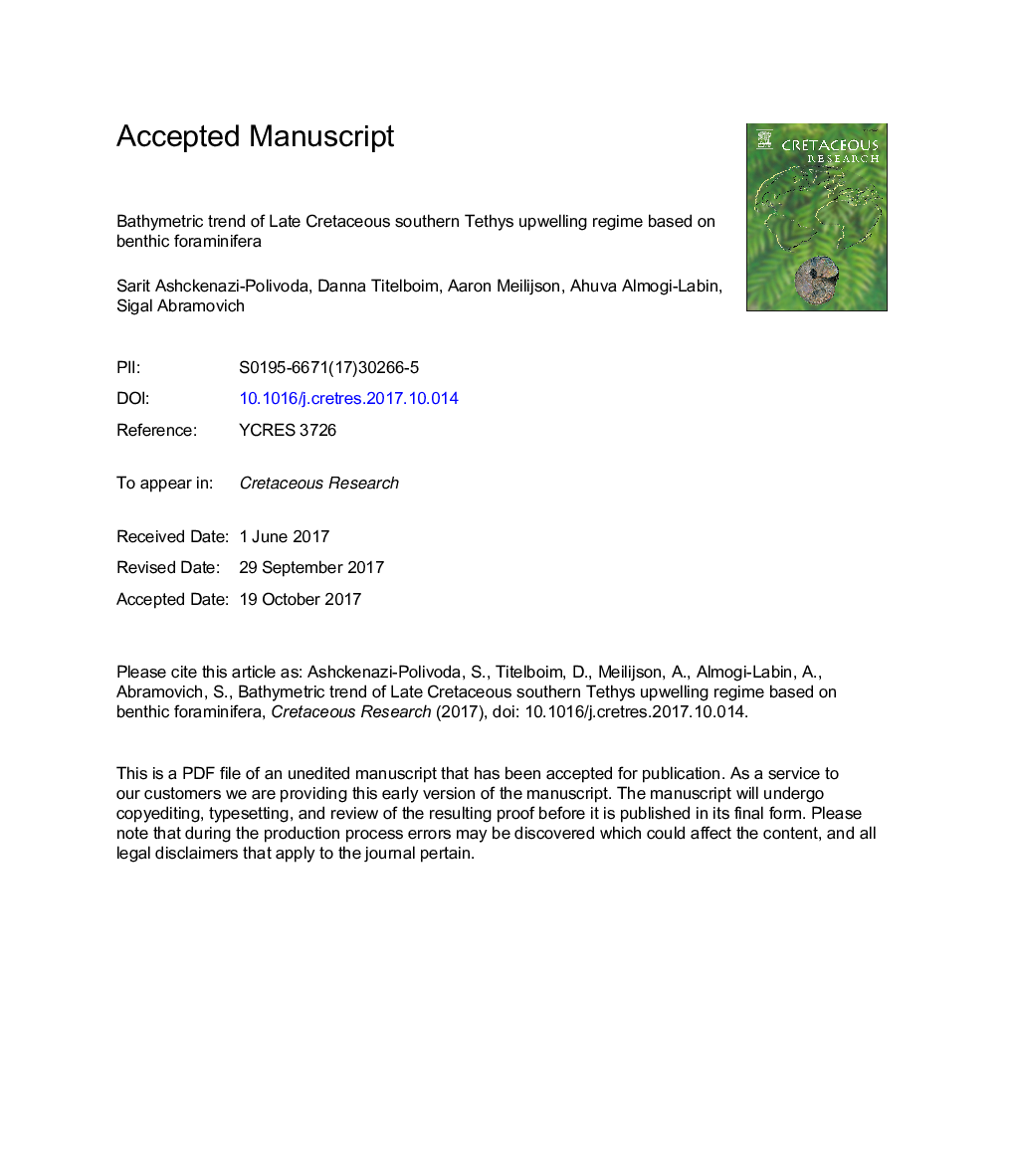| Article ID | Journal | Published Year | Pages | File Type |
|---|---|---|---|---|
| 8916421 | Cretaceous Research | 2018 | 51 Pages |
Abstract
The Upper Cretaceous high productivity marine succession of southern Israel, with its variable lithologies, provides a unique opportunity for addressing this issue. Through this succession, a significant turnover in the benthic foraminiferal assemblages is observed associated with a sharp change in lithology from phosphate (Phosphate Member) to organic rich carbonates (Oil Shale Member; OSM). Statistical nMDS analysis distinguished four groups of species indicative of distinct depth habitats: <200Â m, 100-300Â m, 300-500Â m, and >500Â m. Each one of these groups corresponds to different parts of the sequence. According to our analysis, the shift in the benthic foraminiferal assemblages is attributed to a distinct regional deepening from shelf environment (<200Â m) in the Phosphate Member (upper Campanian) to upper bathyal (200-500Â m) at the base of OSM (base Maastrichtian), and deeper to middle bathyal (>500Â m) during the Maastrichtian. While taking into account other factors affecting benthic foraminiferal distribution, this study demonstrates that depth distribution models based on normal marine settings might also be applicable as proxies for paleobathymetry in high productivity environments.
Keywords
Related Topics
Physical Sciences and Engineering
Earth and Planetary Sciences
Palaeontology
Authors
Sarit Ashckenazi-Polivoda, Danna Titelboim, Aaron Meilijson, Ahuva Almogi-Labin, Sigal Abramovich,
